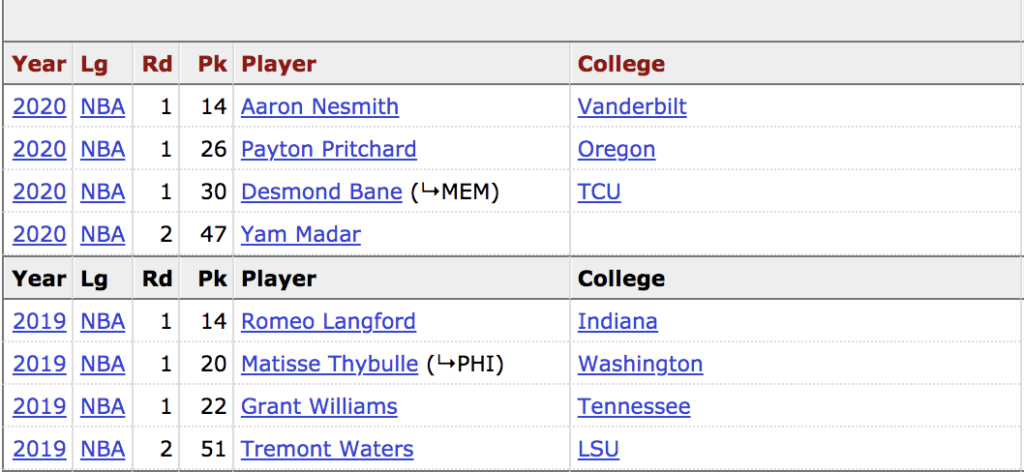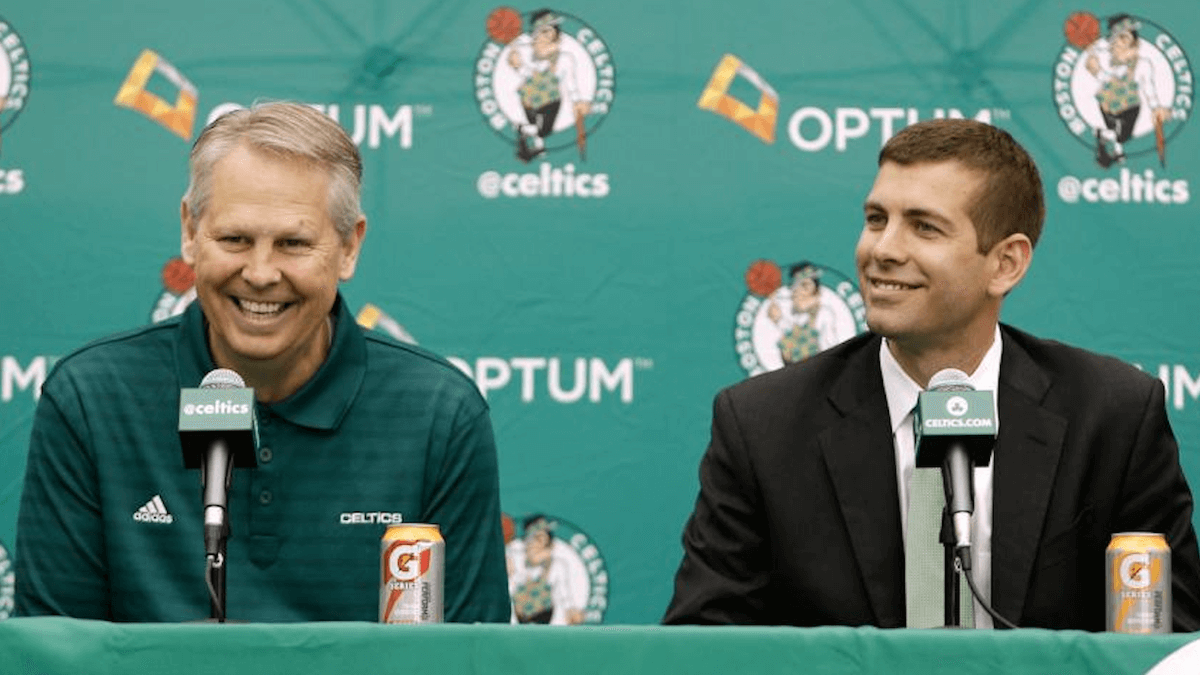Do the good times outweigh the bad? It’s a question I ask myself whenever I judge someone’s legacy. I’m confident in saying Danny Ainge is a good executive and Brad Stevens is a good coach. Ainge and Stevens both had success with the Boston Celtics, but after a few disappointing seasons in a row, their legacies ran into some problems.
On Wednesday, the Boston Celtics announced that Ainge is stepping down as President of Basketball Operations. Replacing Ainge is Stevens, who will leave his position as head coach to work in the front office.
A change was coming to Boston in some way, shape, or form. This past season was a disaster. After making the Conference Finals in the Bubble, injuries and Covid plagued the Celtics as Jayson Tatum, Jaylen Brown, and Kemba Walker all missed significant time throughout the year. The lineup of Tatum, Peyton Pritchard, Semi Ojeleye, Jabari Parker, and Grant Williams wasn’t enough (shocker) to defeat the Nets as the Celtics were bounced from the first round of the playoffs.
Theo Epstein, who won championships for both the Boston Red Sox and Chicago Cubs, believes that 10 years is an appropriate amount of time to stay with a team before moving on. Theo’s rationale makes a lot of sense. At some point, the message in year eight or nine doesn’t positively affect the players and organization as it did in year one or two. A new voice for the Celtics is probably a good thing.
Ainge and Stevens have had more highs than lows. Ainge came in guns blazing in 2003 when he traded Antonie Walker, a fan favorite at the time, and essentially made coach Jim O’Brien resign. What happened next? Ainge hired Doc Rivers, and the two began to rebuild. In 2007, “Trader Danny” acquired Ray Allen and Kevin Garnett to form the Big Three with Paul Pierce, which resulted in one NBA Championship and two Finals’ appearances in three years.
Ainge also knew when to pull the plug on a team. Ainge committed highway robbery when he traded Garnett and Pierce to the Nets for every draft pick known to man. (Five players, three firsts, and a pick swap, but you get my point.) Trader Danny also acquired Kyrie Irving (more on him later) and drafted Brown and Tatum. Don’t forget that Ainge traded back to take Tatum instead of drafting Fultz.
Here’s what Ainge doesn’t get a lot of credit for, which is surprising. He took hired Stevens! The guy who led Butler to two straight NCAA Championship games became a top 5 NBA coach during the middle of this tenure with the Celtics. Stevens led a team with Isaiah Thomas and Crowder to the Conference Finals in 2017 and followed that up with a Game 7 loss in the same round in 2018.
Overachieving on a team with less talent than the opponent was the theme of Stevens’ tenure. The same underdog mentality he established at Butler translated to the Celtics with three Conference Finals appearances in the last four seasons.
Despite great starts, both Ainge and Stevens start to disappoint in 2019. Kyrie’s tenure in Boston was a disaster. Every GM would have made the Kyrie trade, but it clearly backfired. Stars like Kawhi Leonard and Anthony Davis would have been perfect to pair with Kyrie, but Ainge didn’t want to take a chance on guys who may not have re-signed long-term with Boston. There is some validity to Ainge’s thought process, but you can’t help but think “what if” they finally pushed their chips in and traded Brown for Kawhi or Tatum for Davis.
That’s one of my biggest gripes with Ainge. He was fearless in the late 2000s, trading fan favorites and draft picks to form a successful Big Three. He won a title because of his boldness. Because the Kyrie trade went sour, the big trades came to a halt. The Cs became the team that “almost” traded for a star. They almost traded for Kawhi and Davis. Almost isn’t good enough to win titles. Even this past year, the Celtics almost traded for Aaron Gordon, who is the third-best player on a Nuggets team with the best record since the All-Star break. Instead, they settled for Evan Fournier. What happened to “Trader Danny” who wasn’t afraid to make the big move?
For as good as Ainge as was drafting stars, he struggled to draft rotation players. Here are Ainge’s last two drafts.

If we’re grading these drafts, 2019 is an F, and 2020 is a D+. That’s not good for an executive that loves to accumulate draft picks. It may be apples and oranges, but the fact remains that the Nets are in a better position to win a championship than the Celtics, which seemed like an impossible task a few years ago.
For Stevens, the “can’t coach superstars” narrative started to form after the Kyrie debacle. In the Bubble, Erik Spoelstra ran circles around Stevens. Spoelstra is an elite coach, but at one point, so was Stevens. Maybe Stevens wasn’t more valuable than a superstar player.
To be fair, if Gordon Hayward doesn’t shatter his foot in Game 1 of the 2017-2018 season, maybe things work out differently for both Ainge and Stevens. However, the Celtics let Hayward walk for nothing this past year in a season where Hayward had the Hornets in the top 6 in the Eastern Conference before his injury.
Now, Stevens will get a chance at redemption when he becomes “the new Ainge.” With no front office experience, finding the right coach and roster to accompany Brown and Tatum will be a tall task for Stevens.
Overall, Ainge and Stevens had moments where they were at the top in their respective positions, but the past few seasons felt like major disappointments. It’s hard to end a relationship on a high note, but Ainge and Stevens’ 2020-2021 season was as sour as it gets. Now, both will look towards new opportunities to rewrite their endings.
What are your predictions for the Celtics’ future? Leave your thoughts in the comments below or tweet us, @unafraidshow.


